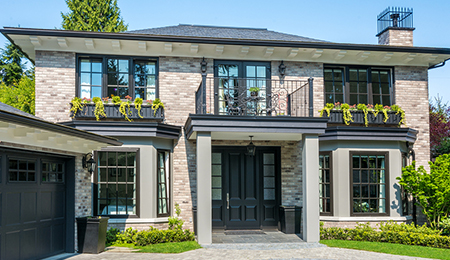Despite some concern, a market crash isn’t imminent, and there are nine reasons why.
1. There are many differences between the market of 2005 and the market of today. In 2005, for example, subprime loans totaled more than $620 billion and comprised about 20% of the mortgage market. In 2015, they totaled only $56 million and comprised just 5% of the mortgage market.
2. Banks have raised lending standards. According to CoreLogic’s Housing Credit Index, loans originated in 2016 were among the highest quality of the past 15 years. In October 2009, the average FICO score was 686. In 2001, the average score was between 490 and 510.
3. Tighter lending standards have made a difference in the flip market. Lenders now only finance 55% of the home’s value—the flipper has to come up with the rest. During the subprime crisis, banks lent 80% or more.
4. Nationally, the number of homes sold today is 20% below the pre-crash peak. There’s only a four-month supply of inventory, and as a result, about 64% of Americans own their homes, compared to 68% who owned their homes in 2007.
5. Home sales are lower because the recession interfered with a lot of people’s ability to start a career and buy a home. Faced with a poor job market, many decided to further their education. As a result, they’re now burdened with school loans, which makes it less likely that they can save enough money to buy a home. This will keep demand down.
“Loans originated in 2016 were among the highest quality of the past 15 years.”
6. Home prices have outpaced income. The average income-to-housing cost ratio is 30%. In some metro areas, it has skyrocketed to 40% to 50%. Unfortunately, metro areas are also where the jobs are, and this forces young people to pay more for rent and be closer to a job that doesn’t pay enough to buy a house. 32% of home sales today are going to first-time homebuyers. Historically, that number has been closer to 40%, according to the National Association of Realtors. Typically, this buyer is 32 years old, earns $72,000 per year, and pays $182,500 for a home. A two-income couple pays, on average, $208,500 for a home.
7. Homeowners aren’t taking as much equity out of their homes. Home equity rose to $85 billion in 2006 and then collapsed to less than $10 billion in 2010. It remained at that level until about 2015, and by 2017 it only rose to about $14 billion. Obamacare is one reason for that— bankruptcy filings have fallen 50% since the ACA was passed in 2010.
8. When adjusted for inflation, housing prices are only at a similar level to where they were in 2004. From 2012 to 2017, prices rose 6.5% a year on average. From 2002 to 2006, they rose 7.5% per year (in 2005, they skyrocketed 16%).
9. Home builders focus on high-end homes. New homes are large and more expensive—the average size of a new single-family home is almost 2,700 square feet. In 2006, the average size of a new single-family home was 2,500 square feet.
If you have any more questions about our market or you’re thinking of buying or selling a home, don’t hesitate to get in touch with us. We’re here to help.







